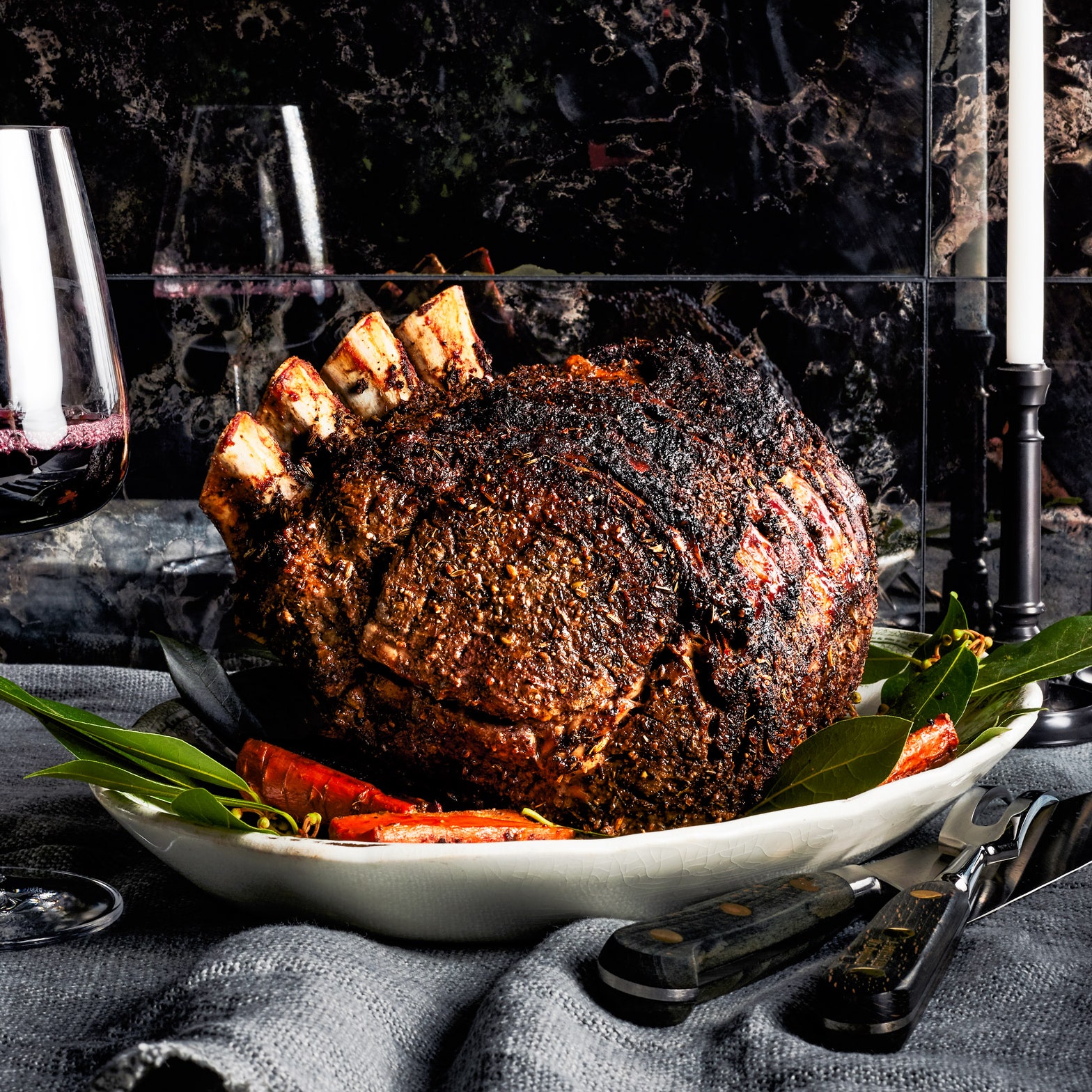Indulge in the delectable flavors and melt-in-your-mouth tenderness of a perfectly cooked prime rib roast. This culinary masterpiece, a cornerstone of memorable gatherings and festive occasions, demands meticulous preparation and flawless execution. This comprehensive guide will empower you to elevate your prime rib game, ensuring an unforgettable dining experience.
The Best Way to Cook a Standing Rib Roast

Selecting the Perfect Prime Rib Roast
When it comes to preparing a flavorful prime rib roast, the first step is selecting the perfect cut of meat. Here are some key factors to consider:
- Uniform Marbling: Look for a roast with evenly distributed flecks of fat throughout the meat. This marbling not only adds flavor but also contributes to the tenderness of the roast.
- Deep Red Color: A vibrant red hue in the meat indicates that the roast has been well-aged, enhancing its flavor profile. Avoid roasts with a dull or discolored appearance.
- Adequate Fat Cap: The fat cap on the roast plays a crucial role in basting the meat as it cooks and preventing it from drying out. Make sure the roast has a generous layer of fat on the surface.
- Bone-In vs. Boneless: Decide whether you prefer a bone-in or boneless prime rib roast. Bone-in roasts tend to be more flavorful and tender, while boneless roasts are easier to carve and present.
Preparing Your Roast
Once you have selected the perfect prime rib roast, it’s time to prepare it for cooking. Follow these steps for optimal results:
- Bring the Roast to Room Temperature: Take the roast out of the refrigerator at least one hour before cooking to allow it to come to room temperature. This ensures more even cooking.
- Season Generously: Rub the roast with a mixture of salt, pepper, and any other desired herbs or spices. Make sure to season all sides of the roast thoroughly.
- Use a Meat Thermometer: For precision cooking, use a meat thermometer to monitor the internal temperature of the roast. This will help you achieve your desired level of doneness, whether it’s rare, medium-rare, or well-done.
Cooking Methods
There are several cooking methods you can choose from when preparing a prime rib roast. Here are some popular options:
- Oven-Roasting: This traditional method involves cooking the roast in the oven at a low temperature until it reaches the desired doneness. Remember to let the roast rest before carving to allow the juices to redistribute.
- Grilling: Grilling a prime rib roast adds a delicious smoky flavor to the meat. Use indirect heat and a drip pan to prevent flare-ups and ensure even cooking.
- Sous Vide: Sous vide cooking involves vacuum-sealing the roast and cooking it in a water bath at a precise temperature. This method results in incredibly tender and juicy meat.
Flavorful Prime Rib Roast: Tips and Techniques
Resting Period
After cooking your prime rib roast, it’s essential to let it rest before carving. This allows the juices to redistribute throughout the meat, ensuring a moist and flavorful result. Aim to let the roast rest for at least 20-30 minutes before slicing.
Carving
Properly carving a prime rib roast is key to serving it in all its glory. Follow these steps for a picture-perfect presentation:
- Locate the Bones: If you’re working with a bone-in roast, locate the bones and use them as a guide for carving. Slice along the bones to remove the meat in large, even portions.
- Slice Against the Grain: When carving the roast, be sure to slice against the grain for maximum tenderness. This means cutting perpendicular to the direction of the muscle fibers.
- Adjust Thickness: Tailor the thickness of your slices to your preference. Thicker slices will retain more juices and tenderness, while thinner slices offer a more delicate texture.
Serving Suggestions
Enhance the flavors of your prime rib roast with these delicious serving suggestions:
- Horseradish Sauce: A classic accompaniment to prime rib, horseradish sauce adds a spicy kick that complements the rich flavors of the meat.
- Red Wine Jus: Drizzle your prime rib slices with a savory red wine jus for an extra layer of flavor. The acidity of the wine helps cut through the richness of the meat.
- Roasted Vegetables: Serve your prime rib roast with a side of roasted vegetables, such as carrots, potatoes, and Brussels sprouts, for a complete and satisfying meal.
In conclusion, mastering the art of cooking a flavorful prime rib roast is a rewarding endeavor that will impress your guests and elevate your culinary skills. By selecting the perfect roast, preparing it with care, and using the right cooking techniques, you can achieve a dish that is bursting with flavor and tenderness. So gather your ingredients, preheat your oven, and get ready to savor the unparalleled delight of a perfectly cooked prime rib roast.
